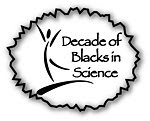Looking back on my life and surveying my memories from my present vantage point - as an adult and a biologist with several years of school under my belt - I sometimes realize that I knew I would be a biologist.
As I stroll along walkways or drive down the street, I sometimes find myself completely entranced by the subtle plots of nature happening before me. These surreal pauses seem to hit me especially hard when I encounter a tree or flower that for some reason is bookmarked in my mind, but I don't know it until that very moment.
I was literally walking down the street, headed to my car and saw this.
We had a rather large Sweet Chestnut tree in my front yard back home in Memphis. These spike pods were the bane of my younger siblings and wandering animals.
Bumping into this young tree was like running into an old friend while on vacation. You never expected to see them but you stop and visit a while and you feel good for having taken the time to catch up.
I first learned about Chestnut trees at Natural Resources Career Camp. The American Chestnut is especially rare because it is susceptible to a tree disease, known as blight. Even if you are lucky enough to see/grow one, it's not likely to grow very long or tall. Because no one in my family knew what kind of tree this was, I took some of the fallen nuts to the Forestry professor at my university (while I was studying for my Master's). He seemed surprised to see the nut and kept asking me where I found it. He seemed to have a hard time believing me when I told him from my yard, from a large tree. Obviously, foreign Chestnut trees are special as well.
Have you come across a chestnut tree? If so which kind?


























2 comments:
You hit on a passion of mine and I'm happy to share some updates about the American chestnut!
The American Chestnut Foundation has been doing a backcross breeding program. They started with crossing an American chestnut and a Chinese chestnut (which has natural resistance to the blight) and then with each successive generation they cross the selected trees back with a pure American parent. When they are choosing what trees to move forward in the breeding program, they purposefully innoculate the trees with the blight to find the ones that are most resistant. In addition, they are looking for trees that show the more American characteristics (There is a reason why the Chinese chestnut could not simply take the place of the American chestnut in the Appalachian Forests--It can't compete against the other forest trees like the Tulip Poplar).
From collecting pollen from large surviving trees across the country (to add diversity to the gene pool) to bagging and pollinating the flowers to harvesting the nuts, it is a very impressive operation. After 26 years, they have a generation that is 15/16th American that looks promising! The trees are being field tested in national forests. In addition, Sponsor Members can also participate in the data collection and research by getting their own potentially blight resistant seed to plant and monitor.
Right now, I still have 20 of those baby trees on my back deck! And of course, the neighborhood kids (some of the same ones from the Computer Literacy Program) helped with the plantings!
If any of your readers would like to learn more about the American Chestnut Foundation and their research, they can visit http://www.acf.org.
And if they are interested in being a "Sponsor Member" and being eligible to order their own seed next March for data collectoin, a link to those details are:
http://shop.acf.org/annual-sponsor-seed-distribution.aspx
P.S. Are you going to make it to Science Online this year?
Post a Comment